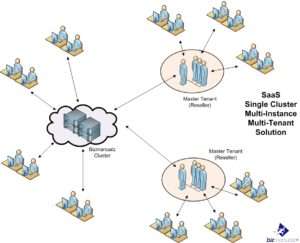How Do You Write a Cybersecurity Plan?

Doing business online is a daunting task. Even if only part of your business happens online, knowing that you’ve got cybersecurity protocols, plans, and policies in place to keep the business afloat and secure becomes critical. How do you write a cybersecurity plan?
A 7-Step Guide to Documenting Your Cybersecurity Plans & Resources

Develop your Information Security Policy and Procedures Manual easily using editable Word templates.
Without prior knowledge in this area, knowing where to start can be difficult. Thankfully, we’ve crafted this 7-step guide to documenting your cybersecurity plans & resources to keep you on the right track:
1. Perform a Security Risk Assessment
Security risk assessments are performed to ensure organizations can assess, identify issues with, and modify their current overall security posture. The assessment requires a large-scale collaboration between data owners, business personnel, and security staff.
Identifying the most important data sources for an organization or business, and determining current vulnerabilities becomes especially critical during this assessment. Determining the classifications of your data structures, identifying important assets, mapping those assets, identifying your larger threat landscape, prioritizing identified risks, and crafting a foundation to lower security risks will all play an important role during this first crucial step.
2. Establish Your Security Goals
When developing a cybersecurity strategy, it’s key that it aligns with the business’s larger goals and company values. After this step has been completed, you can successfully begin implementing a more proactive cyber security program that can cover an organization in a specialized fashion.
Understanding your company’s current ability to handle risks, setting reasonable security expectations, and clearing up especially risky security risks early on will be important during this step. IT cybersecurity professionals are experts at this step and can ensure you secure your business’s cyber security to the fullest.
3. Evaluate Your Company’s Technology 
Now that your security goals have become clearer, it’s time to evaluate your company’s current technological setup. If setups or equipment are determined to be too old or inefficient to handle your company’s cyber security needs, an investment in more full-proof solutions may be needed.
Knowing all of the technology that’s currently in use, where there are sufficient resources that can manage these programs successfully, and if your technology can be streamlined in any way, all become of import during this step.
4. Pick a Security Framework
Picking a security framework can be one of the more stressful, but business-defining steps on this list. Multiple frameworks can be used to establish the cybersecurity practices and protocols used by your operation, after all.
Vulnerability assessments, security risk assessments, and performing penetration tests done on your current systems can all assist in finding the right security framework. As your security team completes this step, they will both determine your current security maturity and will identify what areas of your business’s digital setup must be legally protected. The established security framework will do wonders for your ability to successfully maintain and rework your company’s websites as well.
5. Perform a Review of Your Existing IT Security Policies 
Once you’ve selected a security framework, an extra-thorough review of your existing security policies must be completed. These policies will continue to drive your security team’s work and will allow them to work without vast oversight from other company staff.
Depending on the size of a company, there may be a larger overarching security policy in place or a more complex web of policies that comprise a more uniform whole. Your team will determine what policies are currently being used, which policies only exist in name (or theory), and how best to train employees to uphold the security policies being put in place.
6. Draft a Risk Management Plan and Implement It
As you come to an end of documenting your cyber security plans and resources, you must create a risk management plan, and implement it. The goal of the plan is to provide a detailed analysis of the remaining risks that are threatening your organization or business.
By being proactive with this step, you make it easy for your security team to identify risks as quickly as humanly possible. Incident response plans, data protection policies, data privacy plans, and retention policies will all be vital areas to analyze during this step.
7. Perform an Evaluation of Your Security Strategy 
Now that your final step has been completed in actually documenting your cybersecurity plans and resources, it’s time to perform a fully overarching evaluation of your business’s security strategy. Not only will this support your active security practices, but it will help ward away potential cyber criminals that will target any business that they deem weak enough to be an easy target.
As you complete this step, make sure to remind your security team of the need to conduct an annual risk assessment in the following years, so that your business can remain secure, healthy, and ready to compete.
Guide to Proactive Cybersecurity Plans
Being proactive with your business’s cybersecurity needs and tasks will make or break your ability to compete. Many businesses that fail to take this threat seriously end up being significantly harmed in terms of their financial success, their brand’s reputation, and in regards to the safety of their employees and customers. To ensure your business is ready to compete in the coming decade, implementing this guide is highly recommended.















Leave a Reply